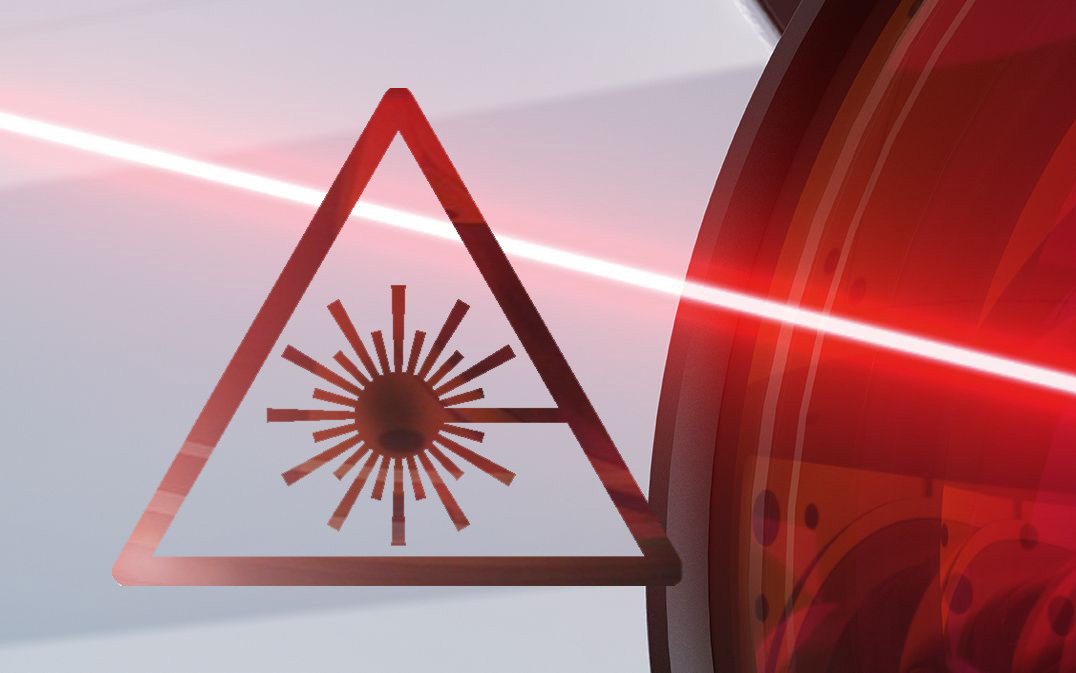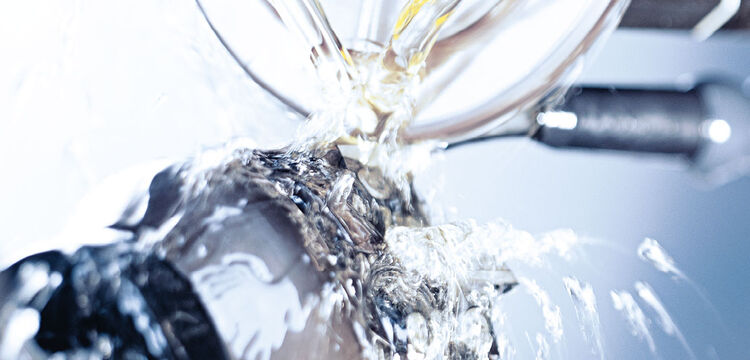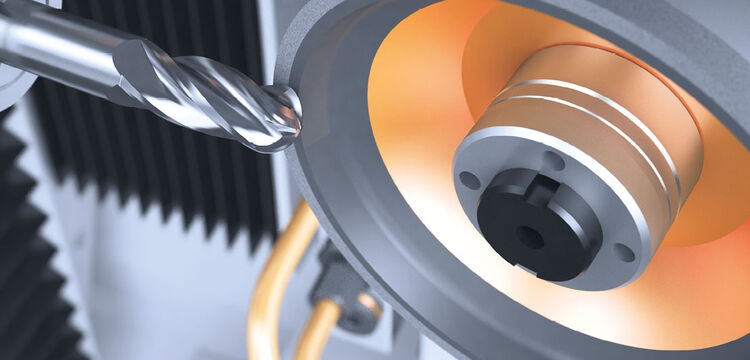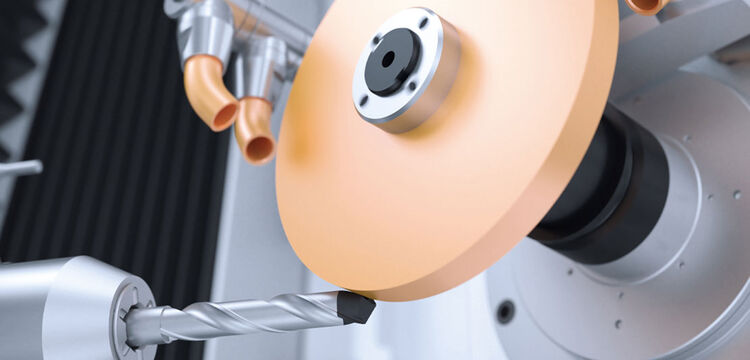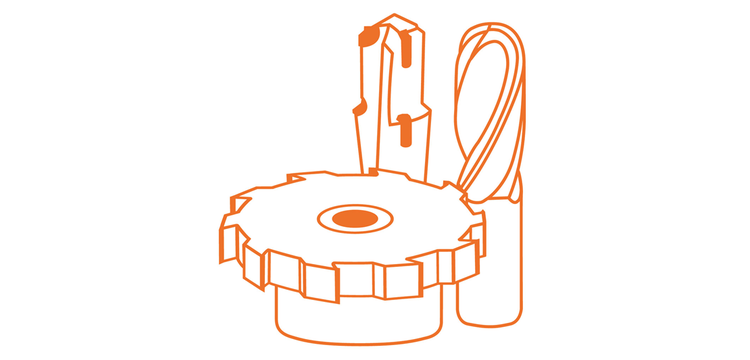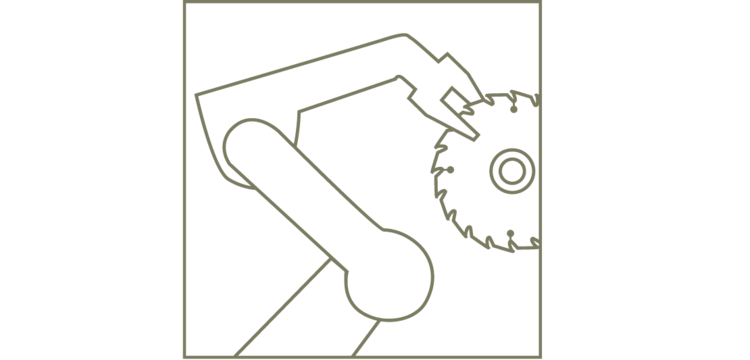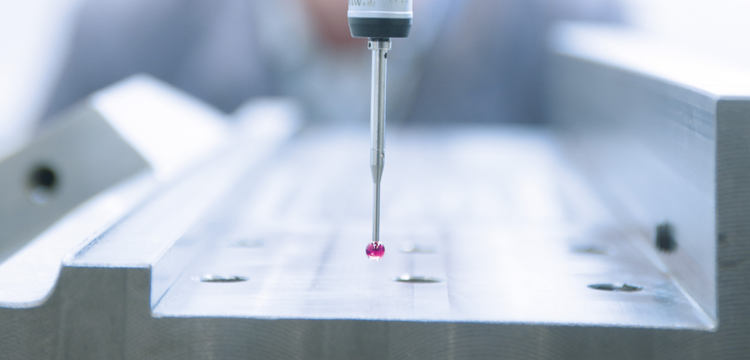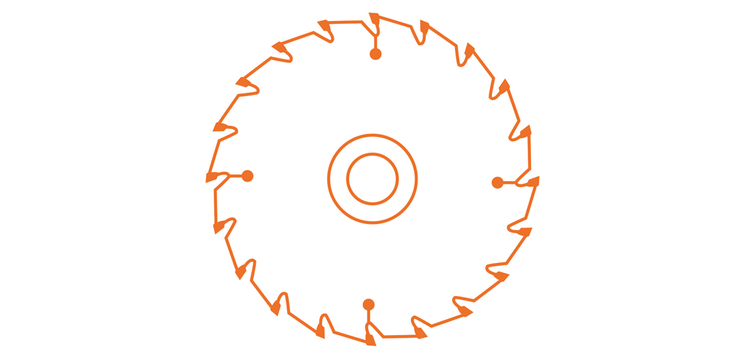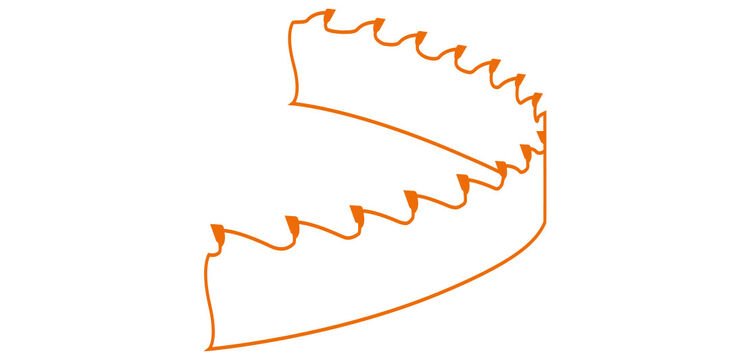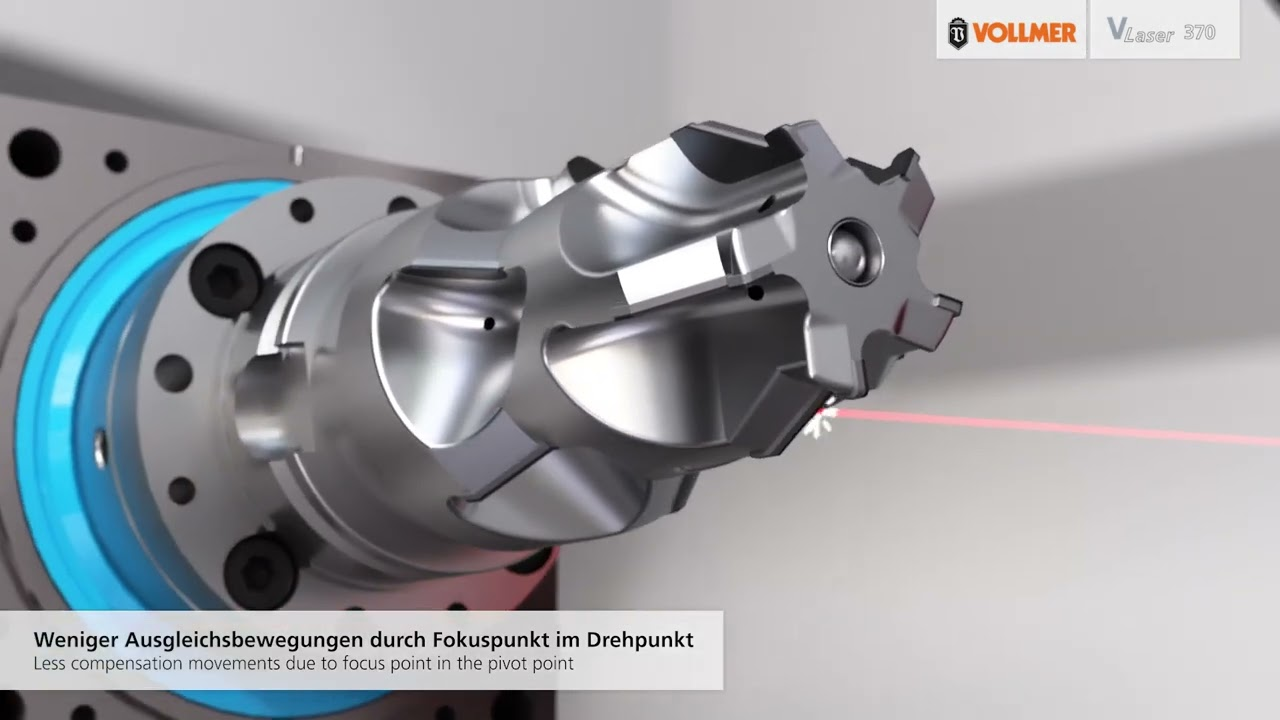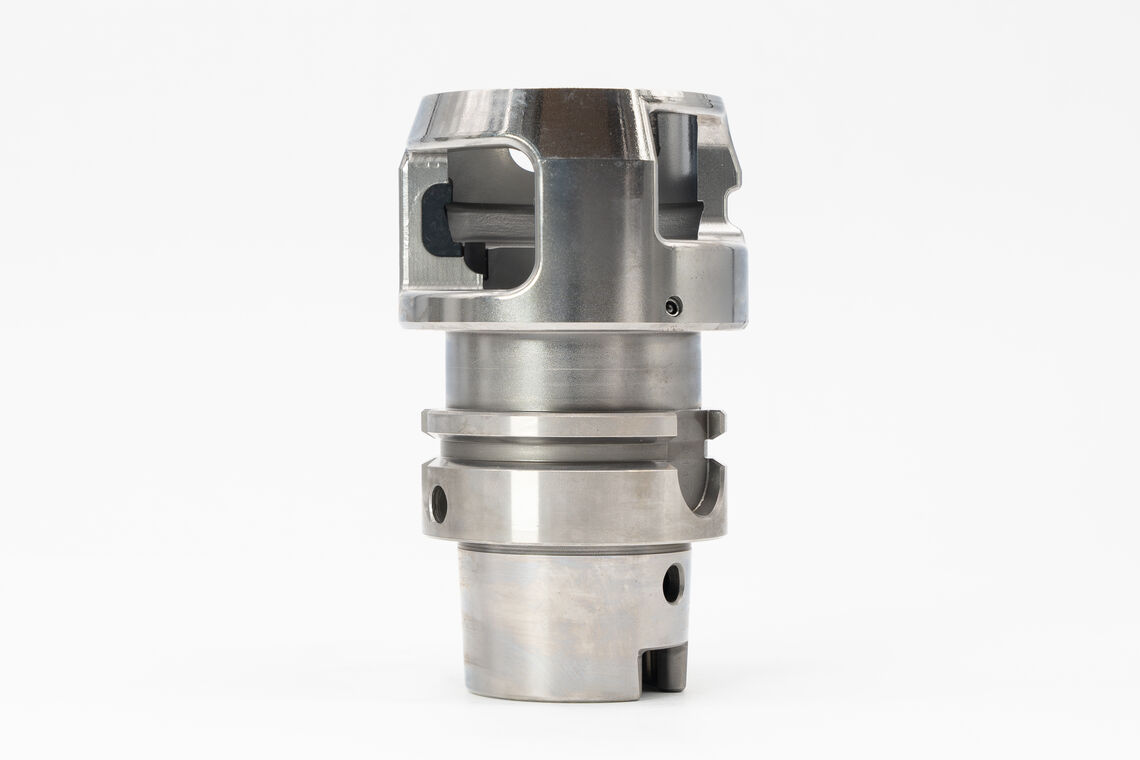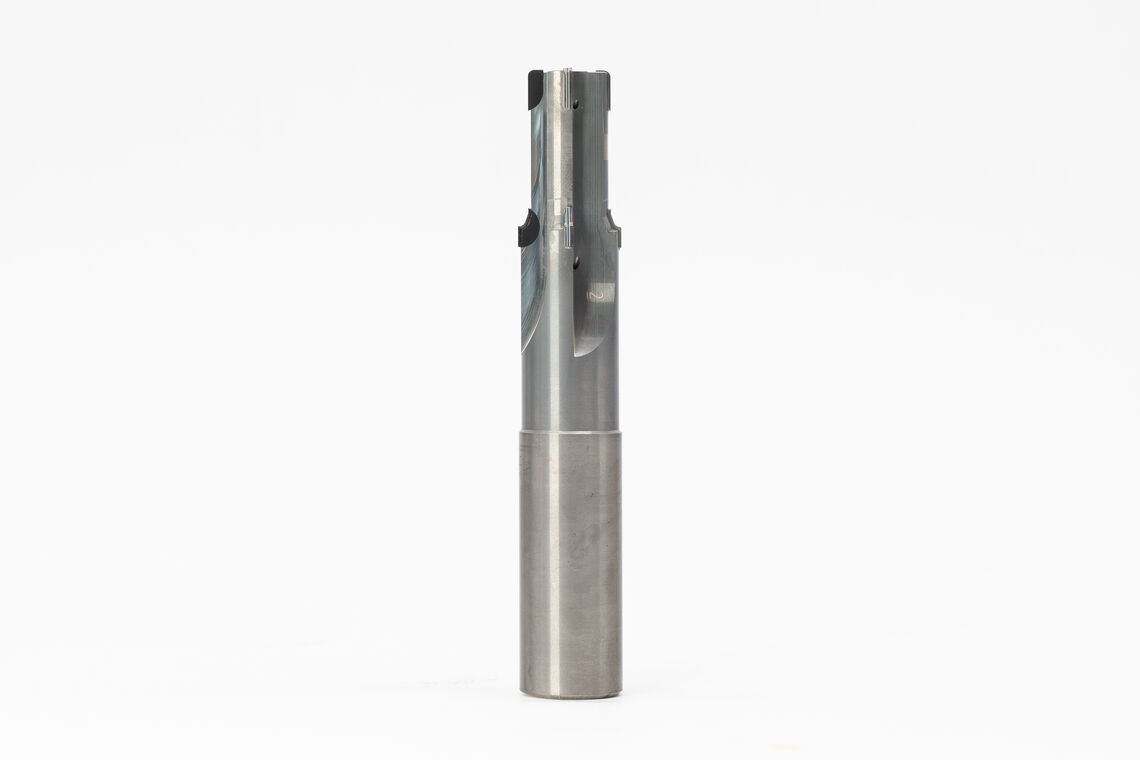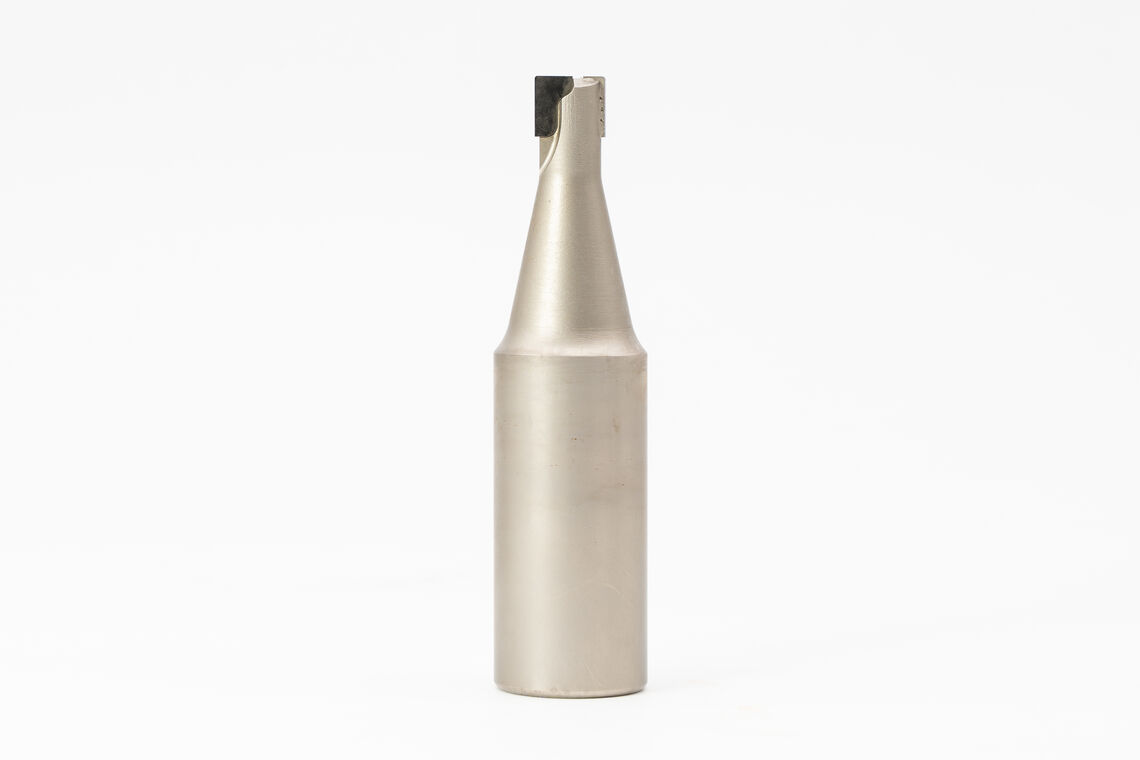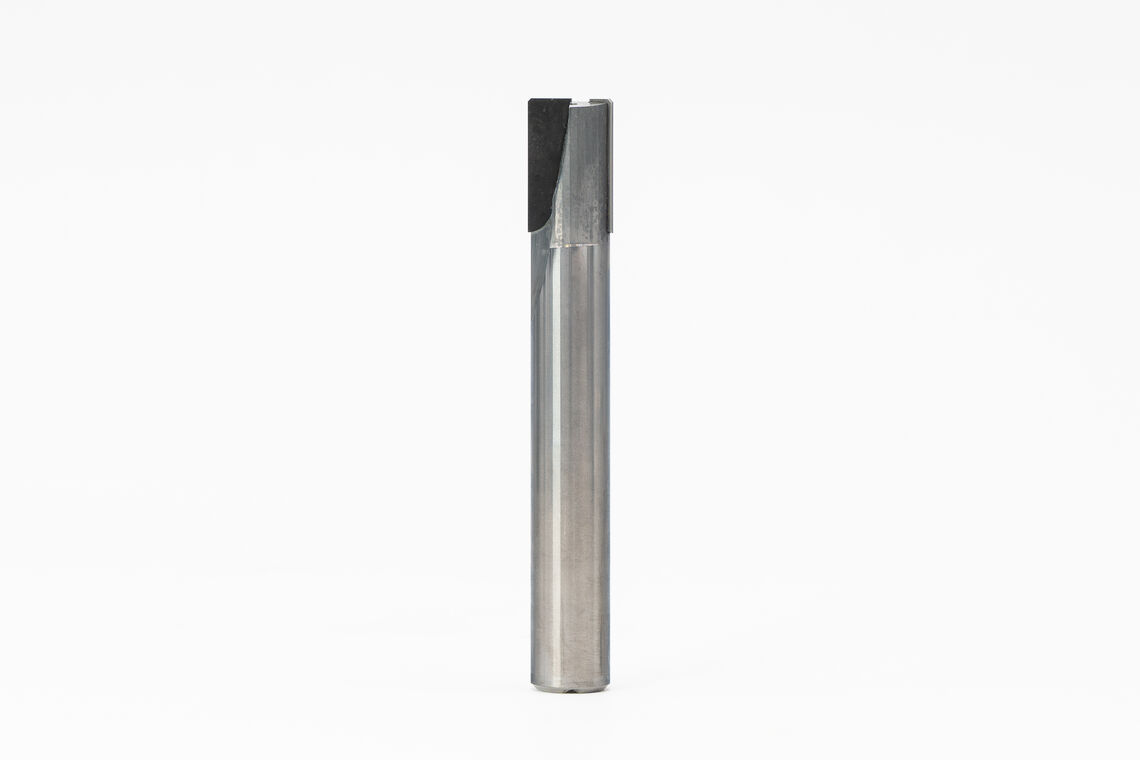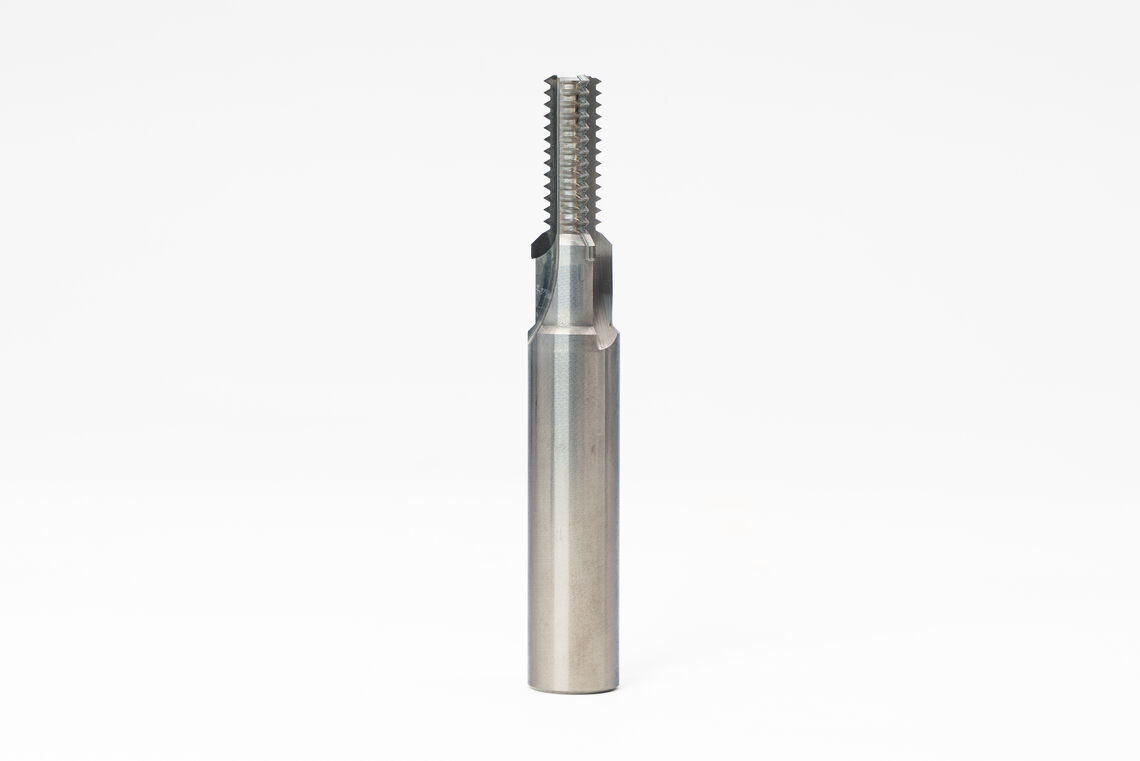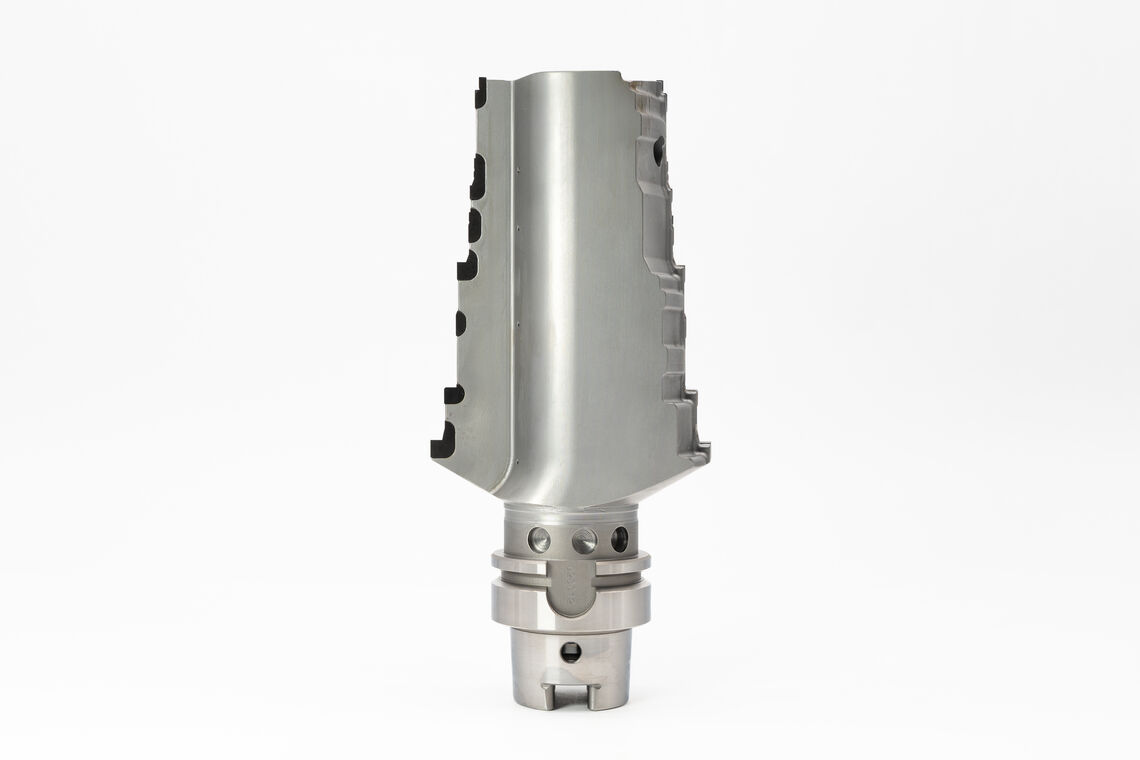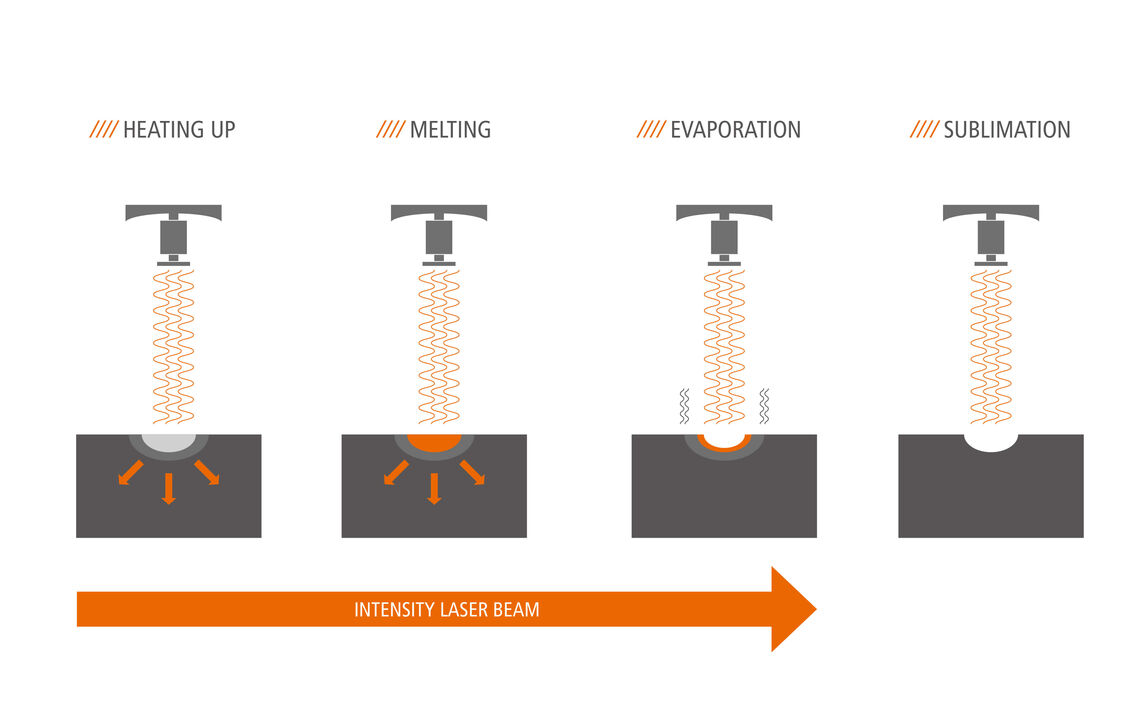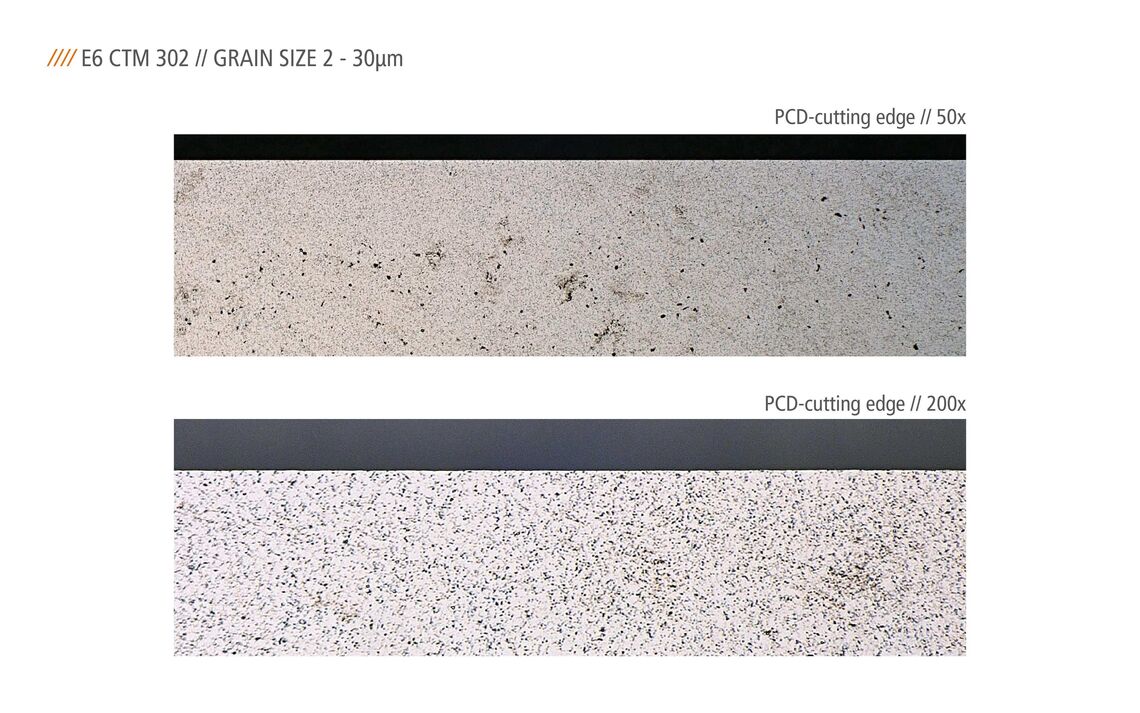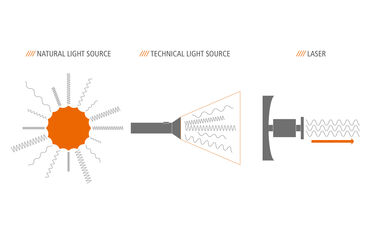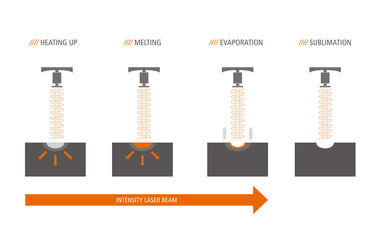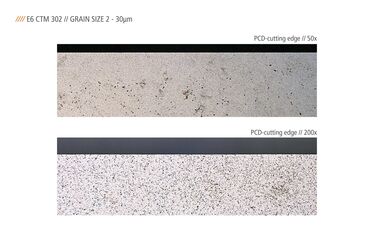VLASER 370
Why a laser? Why from VOLLMER? Because in addition to eroding and grinding, this laser process completes our range for machining rotary tools. Because we want to offer you more than just a very specific process. We want to provide you with exactly the process you need. Especially for ultra-hard materials such as PCD, CVD-D and MCD. Handling and machining tools with a diameter of 150 mm and a length up to 250 mm makes the machine absolutly versatile. High machining flexibility and the best quality and surface finish - that‘s what we developed the VLaser 370 for.
The VLaser 370 is very flexible, highly efficient and thus achieves maximum productivity. It works without making contact, without tool wear and without any significant thermal influence. The combination of efficiency, accuracy and high cutting edge quality helps to increase the operating life of your tools and contribute to the sustainable optimisation of your manufacturing processes. It is equally suitable for manufacturing and sharpening your tools. And of course we also offer automation solutions for unmanned machining around the clock. VOLLMER continues to achieve maximum sharpness in an efficient way.
LASERING - OUR SOLUTION WITH HIGH-PRECISION KINEMATICS
At the core of the VLaser 370 is its fixed laser beam guidance with innovative machine kinematics. The way in which the five axes are arranged on top of each other means that the tool is always machined at the pivot point of the C-axis. This makes it possible to machine tools with minimal axis movement and to ensure stable process control. At the same time, the kinematic chain enables high path accuracy, which has a positive impact on the machining accuracy and quality of the tools.
EXCELLENT KINEMATICS
Fixed beam guidance means no movement in the beam path. The beam guidance housing fixed on the central block offers the advantage of increased process stability and permanent positional accuracy in the focal point. This ensures a consistently high quality of your tools.

With the VLaser 370, everything revolves around the laser. Literally in the pivot point of the C-axis. Five axes and a laser with beam guidance enable precise and efficient machining directly at the pivot point. It couldn't be more reliable.
Machining of chip guide noches
Machining of chip guide noches VOLLMER‘s laser technology can be used to optimise different processes in tool manufacturing, including the machining of chip guide notches. This involves incorporating notches behind the tool cutting edge in order to influence the cutting properties.
Intelligent operating concept and simple application
The operating philosophy of the VLaser 370 has been tried and tested many times, and is already familiar to our customers from the VPulse 500. It impresses with its simple, user-friendly application thanks to an intuitive user interface. It can be operated directly via the touchscreen on the control desk or with a mouse and keyboard. High functionality due to ability to determine the sequence of order processing, flexible intervention options and integrated parameter management. The system is IoT-enabled and allows you full transparency regarding your machine and processes.
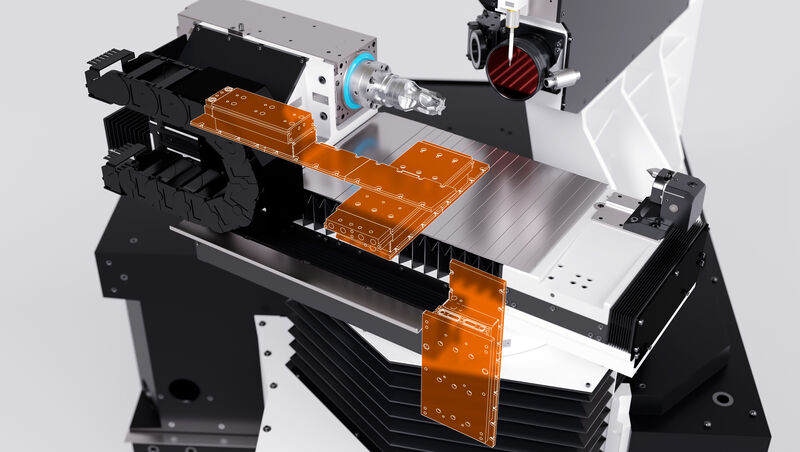
Low-maintenance linear drives
All axes of the VLaser 370 are equipped with linear motors, and the rotary axes are equipped with torque motors. Unlike ballscrews, they are not subject to wear and work contact-free, making higher axis speeds and accelerations possible. Integrated glass scales in all axes ensure optimum stability and extremely high positioning precision.
Compact and carefully-considered design
The VLaser 370 convinces with a carefully-considered design, the highest possible rigidity, and outstanding damping thanks to polymer concrete. With the VLaser 370, VOLLMER also has the right automation solutions ready – for unstaffed machining in production and service. Around the clock.
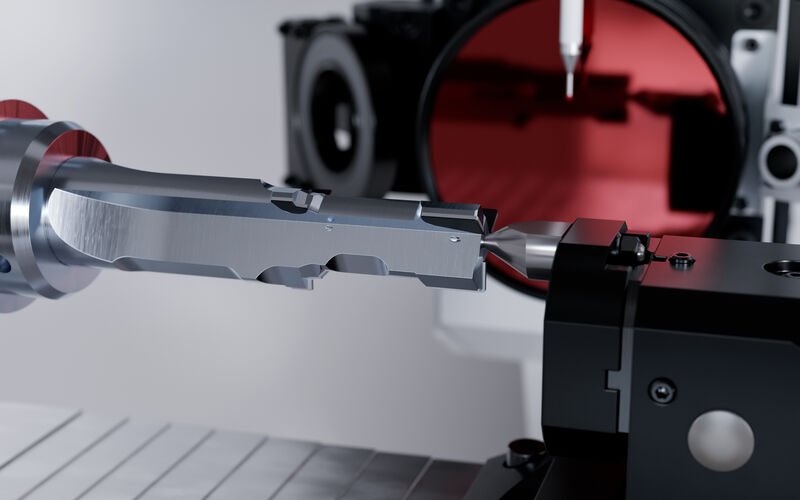
Unique on the market – optional counter point
The VLaser 370 can optionally be equipped with a counter point to achieve even higher concentricity. This makes the VLaser 370 the first laser machine on the market to have such a counter point.
The VLaser 370 makes the difference
Whether short or long tools, small or large diameters, simple or complex contours - the VLaser 370 processes tools with minimal compensating movements and at the same time sets new standards in processing efficiency.

A laser consists of three important components: the laser medium (e.g. CO₂ or crystals), whose atoms are put into an energetically more favourable state by the pump, the second important component of a laser. The third component of every laser is the resonator, which ultimately ensures that the high-energy photons generated in the laser medium leave the material, which is the actual laser beam.
The laser medium:
Different materials can serve as laser medium. There are solid, liquid and gaseous variants into which the different types of laser can be categorized. Famous representatives of each category are for example Nd:YAG laser, rhodamine in methanol or the CO₂ laser. In the case of solid-state lasers, the geometric shape of the laser medium can also be used to differentiate. Among others, there are rod lasers, disk lasers or fiber lasers.
The laser medium also determines the wave positions of the laser radiation and the type of excitation energy. For example, gas lasers are excited by electric fields, solid state lasers by light or infrared radiation. This is where the pump comes into play as a further component.
The pump:
The task of all pumps is always the same: To introduce energy into the system and thereby generate stimulated emission. This process is called pumping, because energy is "pumped" into the system.
The type of excitation energy depends on the laser medium. For example, it can be generated by light irradiation (optical pumping), but also electrical processes, heat, impacts with other particles and chemical reactions can transfer the required energy into the system and produce a stimulated emission.
The laser resonator:
At the end of the process is the resonator. In the simplest case, a resonator can be imagined as a box closed on all sides with highly reflective walls. The radiation of a laser is reflected back and forth within the optical resonator. Partial waves of many revolutions are superimposed. If the wavelength of the radiation field is a multiple of twice the distance between the mirrors, the partial waves overlap constructively, otherwise destructively. This leads to a wavelength selection. The resonator thus fulfils two functions: It restricts the direction of propagation and also the frequency of the light.
VLaser 370
DThe VLaser 370 uses a solid state laser. Solid-state lasers enable precise focusing of the laser beam. It is therefore ideal for manufacturing processes where maximum accuracy is required.
Our lives are influenced by lasers more than we are aware of at first. In medical technology, for example, laser intervention treatments allow operations inside the eye. In everyday life, we use laser light in Blu-ray Discs or the Internet works via fast communication using laser light in fiber optic cables. And this is only a small excerpt from a list of applications.
The laser principle
The word laser is an acronym that stands for "Light Amplification by Stimulated Emission of Radiation". But what exactly is a stimulated emission?
When atoms absorb energy from outside, their electrons move from a lower level (low energy state) to a higher level (high energy state). This is called the "excited state". This state is unstable, the atom immediately tries to return to the low energy state. This attempt is called “transition”. The previously introduced energy is emitted again in the form of light. This phenomenon is called "natural emission". The emitted light collides with other atoms that are in a similar excited state, which triggers the "transition" in these atoms as well. This further intensified emission of light is called stimulated emission.
What distinguishes a laser from a regular light source?
With a conventional light source such as a lamp, the light waves scatter in different wavelengths in all directions. Usually this is a mixture of different colours, which in sum appear white. A laser, on the other hand, emits bundled light waves at a single wavelength and has almost no scattering. A laser beam is coherent, which means that the light waves with their peaks and valleys oscillate in perfect synchronization. We make use of this characteristic with the VLaser 370 in tool machining: The intensity of the laser energy is stable for a long time by the coherence and can be bundled even further by lenses. When the laser beam hits the material surface of the tool, it is absorbed and thus heats the material. This heat development leads to the fact that material can be removed or completely vaporized.
A laser for high-quality cutting edges
The VLaser 370 uses an economical laser in the short pulse range for this purpose. Due to the combination of short pulses and high pulse energies, almost any material changes very quickly from the solid to the gaseous state. Even ultra-hard materials such as PCD, CVD and MCD vaporize easily - the laser works its way through the diamond as well as the bonding material and cuts through it perfectly. In this way, the cutting edges and also the necessary chip grooves can be produced with the most precise quality and shape accuracy. The result: high-quality cutting edges with ultra hard cutting materials.
If you deal with laser processing, sooner or later you will be confronted with certain laws, guidelines and standards. Since a laser can pose a hazard depending on its power, the measures described therein ensure reliable operation. The requirements are aimed at both manufacturers and users with the aim of informing about potential dangers and minimising risks.
As a starting point, the manufacturer must first classify his laser product. The classification is based on the different degrees of danger caused by the laser radiation - increasing from class 1 to class 4. The classes are based on the accessible radiation and its effects on eyes and skin in case of contact with the laser beam as well as indirect factors such as fire and explosion hazard. Depending on the laser class, appropriate protective measures are then derived.
The laser class of VLaser 370 - technical protective measures
Despite the use of a category 4 high-power laser in the VLaser 370, the machine is classified as a category 1 machine in normal operation. This means that it is a safe laser machine without a hazardous area. The reason for this is that the laser radiation in normal operation as intended is completely shielded from the outside by the built-in safety precautions. The protective housing and the laser protection glass ensure that no radiation can reach the user from inside. An extraction system removes vapours and dust. The machine door also has a safety interlock which prevents the door from being opened during processing. The use of the VLaser 370 at your site therefore does not require any elaborate protective measures due to the enclosed laser and safety precautions. Separate rooms and the wearing of protective clothing are not necessary.
While there is no danger during normal operation, it may be necessary to open the laser enclosure during repair work or service. In this scenario, a higher laser class applies, which is associated with an increased risk and the necessary protective measures. The protective housing may only be removed by qualified personnel using special tools, taking special protective measures into account. However, if the service work is carried out by VOLLMER, we shall be responsible for laser protection during on-site work.
Organisational recommendations
In addition to the technical measures which guarantee the safe operation of a laser machine, supplementary organisational protective measures are recommended and should be considered. Although the appointment of a laser safety officer at your company is not mandatory for the VLaser 370, the employee will acquire a certain level of expertise in this subject through training. He or she can advise on safe use, carry out risk assessments and instructions, prepare appropriate work instructions and check functions.
Safety-conscious working plays an important role in all areas, in all departments and when using any machine. Laser processing is no exception. Even if standards and regulations may seem more complex at first glance, in the case of the VLaser 370 this is a simple matter. However, our team will be happy to assist you with advice and support if you are interested in a VLaser 370.
